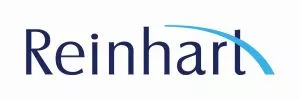In recent years, inpatient health care facilities, including post-acute and long‑term care facilities, have been among the industries with the highest rates of workplace injury and illness. In 2013, one in five nonfatal occupational injuries occurred among workers in the health care and social assistance industries, the highest number of such injuries reported for all private industries. In the same year, nursing and residential care facilities had a days away, restricted work activity and job transfer ("DART") rate of 4.5, nearly three times the national private industry rate.
Expanded Focus:
To combat this injury and illness trend, in June 2015, the Department of Labor's Assistant Secretary for Occupational Safety and Health announced details of a new health care enforcement initiative, entitled "Inspection Guidance for Inpatient Healthcare Settings" (" Enforcement Memorandum"). The Enforcement Memorandum provided guidance for inspections conducted in inpatient health care settings, and addressed a number of specific, focused hazards, including:
- musculoskeletal disorders relating to patient or resident handling;
- exposure to blood‑borne pathogens and tuberculosis; and
- workplace violence.
In addition to these focused hazards, the Enforcement Memorandum also identified other hazards that may be the subject of programmed or unprogrammed inspections including, but not limited to, exposure to multidrug resistant organisms ("MDROs"), such as Methicillin-resistant Staphylococcus aureus ("MRSA"), and exposure to hazardous chemicals, such as sanitizers, disinfectants, anesthetic gases and hazardous drugs. Whenever additional hazards come to the attention of an Occupational Health and Safety Administration ("OSHA") compliance officer, the Enforcement Memorandum states that the scope of an inspection may be expanded to include such hazard.
The Enforcement Memorandum follows a three-year National Emphasis Program aimed at inpatient health care facilities, which, through qualitative and quantitative inspection data, indicated a continued need for OSHA to target efforts toward materially reducing worker exposure to the focused hazards identified above.
Where to Start:
Once an OSHA compliance officer is at your facility, noncompliance can quickly turn into costly penalties. Taking proactive steps to ensure compliance now could save your facility significant time and money in the long run. Consider taking the following steps to begin or to reevaluate your facility's safety and health management system:
- Management Leadership: Management must demonstrate a commitment to improve safety and health, and communicate this commitment to the organization. Management can start by establishing goals and objectives, and provide adequate resources and support. Management should continue to monitor progress, verify system implementation and identify opportunities for improvement.
- Employee Participation: Given employee knowledge of the workplace, it is important to involve employees in all aspects of a health and safety management system. Employees should be encouraged to openly communicate with management and report any health and safety concerns.
- Hazard Identification and Prevention: Processes should be in place to continually identify workplace hazards and risks. Consider conducting an internal compliance audit to identify hazards and formulate prevention strategies. However, as with any internal compliance audit, facilities need to engage outside legal counsel to conduct the audit to ensure that the audit is not subject to future disclosure.
- Hazard Prevention and Control: Processes and procedures should be implemented to eliminate or control workplace hazards and achieve the goals and objectives set by management.
- Education and Training: All employees should receive the necessary education or training on hazard recognition and control.
- Inspection Response: If an OSHA compliance officer arrives to inspect your facility, stay calm. Ask for the compliance officer's credentials and verify the credentials by calling the local OSHA Area Office. Immediately notify the appropriate management officials that the compliance officer is on site. Politely ask that the compliance officer wait until the appropriate management official and/or legal counsel have arrived before conducting the inspection. Consider whether you should request an "opening conference" to discuss the scope of the inspection and consider whether you should request a search warrant.
Additional Benefits of Compliance:
Beyond ensuring legal compliance and avoiding fines and penalties, health care facilities have a significant financial and quality of care incentive to reduce workplace injuries. A safety and health management system can help your facility realize a range of benefits, including:
- fewer injuries, illnesses and infections;
- reduced costs for workers' compensation, lost wages and medical costs;
- decreased need for temporary staffing, overtime when an employee misses work and turnover caused when an employee quits;
- higher job satisfaction, morale and employee retention; and
- enhanced industry reputation.
Situations that put employees at risk also may increase the risk of falls, fractures, bruises and skin tears for residents. Therefore, reduced employee injury and illness can help improve resident safety and satisfaction.
Additional Resources:
OSHA has developed an extensive array of general and industry‑specific resources to assist your facility in reducing workplace injuries and illnesses.
- OSHA Compliance Quick Start for Health Care Employers: This resource provides a step-by-step assessment tool to help identify some of the major OSHA requirements and guidance materials that may apply to your health care facility.
- OSHA Compliance Assistance Health Care Industry Library: This resource provides a collection of forms, publications, resources and sample programs from the Quick Start steps above, plus additional compliance assistance resources.
- OSHA Webpage for Health Care: This resource provides an array of OSHA resources targeted toward the health care industry.
- OSHA Webpage for Nursing Homes and Personal Care Facilities: This resource provides an array of OSHA resources specifically targeted toward nursing homes and personal care facilities.
- OSHA Webpage for Hospitals: This resource provides an array of OSHA resources specifically targeted toward hospitals.
- Safety and Health Management Systems and Joint Commission Standards: A Comparison: This resource shows how core elements of a safety and health management system relate to Joint Commission accreditation standards. Safety and health initiatives can easily be integrated into existing Joint Commission compliance plans.
- OSHA Brochure on Safe Patient Handling: Preventing Musculoskeletal Disorders in Nursing Homes: This resource provides a brief background on safe patient handling and steps to reduce workplace injuries.
- Safe Patient Handling: A Self-Assessment: This brief questionnaire can help administrators and safety managers review their patient handling injury rates, examine existing policies and programs, and identify areas of concern and opportunities for improvement.
- Safe Patient Handling Program Checklist: This customizable document includes a helpful list of factors to consider when starting or evaluating an existing safe patient handling program.
The content of this article is intended to provide a general guide to the subject matter. Specialist advice should be sought about your specific circumstances.



